Bald Eagle: A Majestic Icon of the Sky
Exploring the Remarkable Traits, Habitat, and Cultural Legacy of America's National Bird
The bald eagle (Haliaeetus leucocephalus) is an iconic bird of prey that embodies the spirit of freedom and strength for many people, particularly in the United States, where it is recognized as the national bird. Its striking appearance, characterized by a sharp contrast of dark brown plumage and a white-feathered head and tail, captures the imagination of wildlife enthusiasts, photographers, and birdwatchers alike. However, beyond its aesthetic appeal, the bald eagle represents a broader story of survival, recovery, and the vital role of conservation efforts in sustaining avian biodiversity.
Native to North America, the bald eagle primarily thrives near large bodies of open water where fish and other prey are plentiful. Over decades, this magnificent raptor has become not only a symbol of wildlife conservation success but also a testament to the resilience of nature. This article will delve into the bald eagle’s physical characteristics, habitat preferences, dietary habits, behavior, conservation status, and cultural significance, providing a comprehensive overview of this remarkable bird and its impact on both the ecosystem and human culture.
The Bald Eagle is one of the largest eagles in the world, known for its impressive wingspan and majestic appearance.
Bald Eagle Physical Characteristics
The bald eagle is a large bird of prey, easily identifiable by its size and unique coloration. Adult eagles typically measure between 70 to 102 centimeters (27.6 to 40.2 inches) in length. The male bald eagle generally averages 90 cm (36 inches) long, while females can reach sizes around 108 cm (43 inches). They boast impressive wingspans, with males averaging 2 meters (6.6 feet) and females reaching up to 2.5 meters (8 feet). The visual impact of these dimensions is akin to standing next to a large dog majestic and formidable.
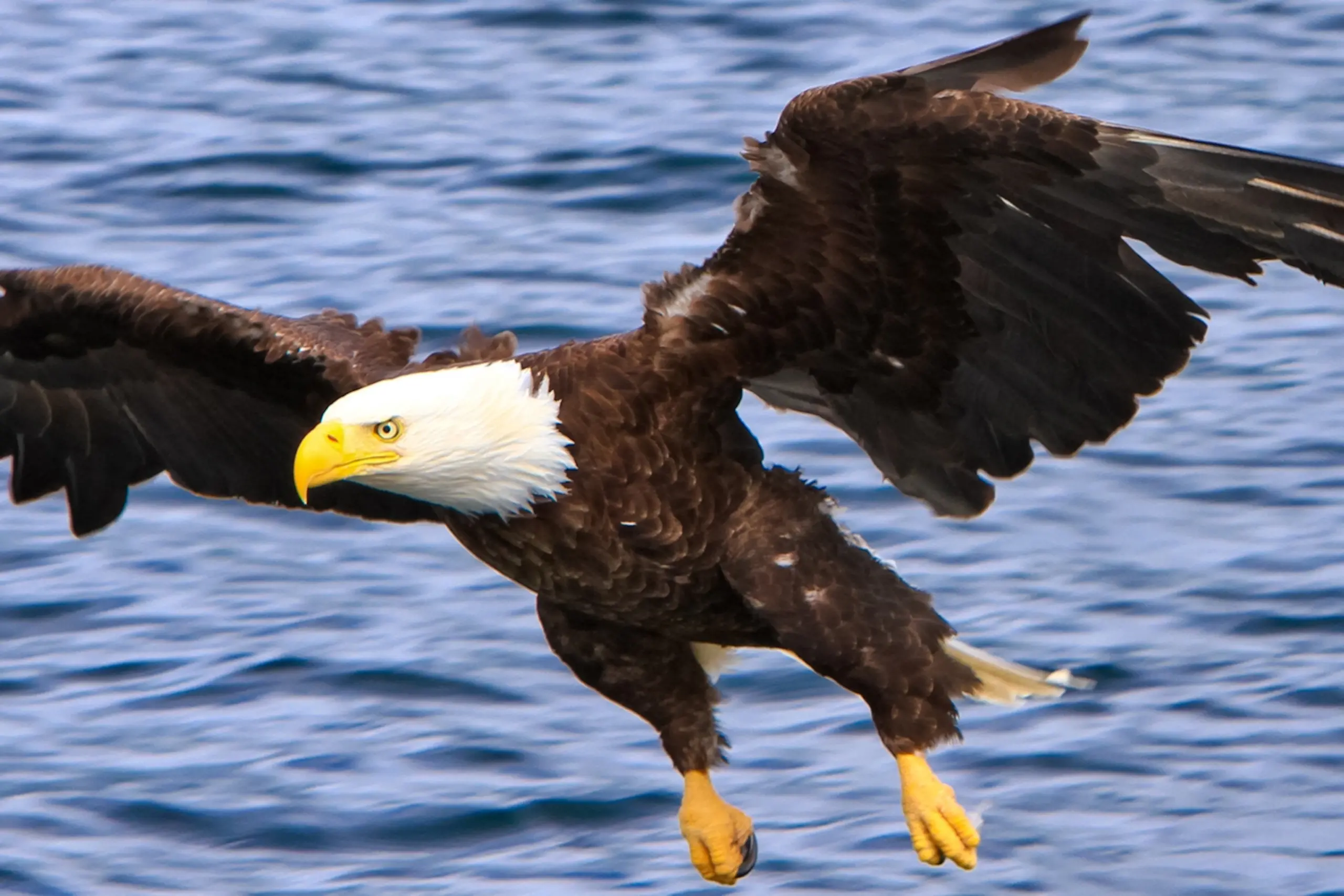
One of the most striking characteristics of the bald eagle is its dazzling plumage. Adult bald eagles possess a rich brown body complemented by a bright white head and tail, which is reminiscent of a snowy landscape against an autumn horizon. This striking coloration serves both a function of camouflage and an emblematic purpose, as it equally embodies contrast and magnificence.
Their feet are bright yellow, ending in formidable talons that are essential for catching prey. A hooked yellow beak completes the picture, allowing these birds to tear through flesh with ease. Eye color is another noteworthy feature their glaring yellow eyes are sharp and piercing, designed for spotting prey from high altitudes.
Juvenile bald eagles present an entirely different appearance, with dark brown feathers that can make them indistinguishable from other raptors at first glance. It isn’t until they reach 4 to 5 years of age that they develop adult plumage. When comparing adult and juvenile eagles, it’s reminiscent of the contrast between a wise old sage and an inexperienced youth, symbolizing growth and maturation.
Summary of Bald Eagle Physical Characteristics
- Length: 70 to 102 cm (27.6 to 40.2 inches)
- Wingspan:
- Males: Approximately 2 meters (6.6 feet)
- Females: Up to 2.5 meters (8 feet)
- Coloration:
- Adults: Dark brown bodies, white head and tail
- Juveniles: Dark brown with mottled feathers
- Feet and Beak:
- Bright yellow feet with powerful talons
- Yellow hooked beak
These impressive physical traits not only highlight the bald eagle’s status as a top predator but also emphasize its symbolic significance in cultural and environmental contexts.
Size and Appearance
The size and appearance of the bald eagle are monumental, enriching its status as a breathtaking bird of prey. With adult birds measuring between 70 to 102 centimeters and wingspans stretching from 1.8 to 2.5 meters, the bald eagle’s presence in the sky is commanding. Picture a majestic ship sailing through the clouds these birds of prey navigate the airways with equivalent grace and power.

Females are notably larger than males, underscoring a common theme in raptor species known as sexual dimorphism. The larger size of females allows them to carry more weight, particularly when nesting, while their smaller counterparts offer efficiency in defense and hunting smaller prey. The variance in size might spark comparisons to royalty: the female as the queen, bearing the weight of nests, and the male as the agile king, aiding in the hunt and territory defense.
Their plumage contrasts sharply the rich brown of their bodies signifies their strength, while the brilliant white of their heads and tails act as a beacon of purity and power. Such coloration allows for a unique recognition in the wild, ensuring that both mates and rivals can easily identify them. This visual distinction could be likened to a flag waving in a fierce storm, standing firm and proud, symbolic of resilience.
Moreover, these birds exhibit sexual dimorphism not just in size but also in vigor and stamina, which is crucial during mating displays and territorial confrontations. The timeline from juvenile to adult plumage signifies an extraordinary journey akin to a caterpillar transforming into a butterfly, where the true extent of their beauty and prowess is only revealed with time.
Coloration and Plumage
The coloration and plumage of the bald eagle (Haliaeetus leucocephalus) are not just pleasing to the eye; they serve distinct ecological purposes. Juvenile bald eagles present a strikingly different appearance compared to their adult counterparts. Initially draped in mottled dark brown feathers, they lack the iconic white head and tail associated with maturity. This camouflage allows them to blend into their surroundings, assisting in survival during their formative years like a child learning how to navigate a complex world.
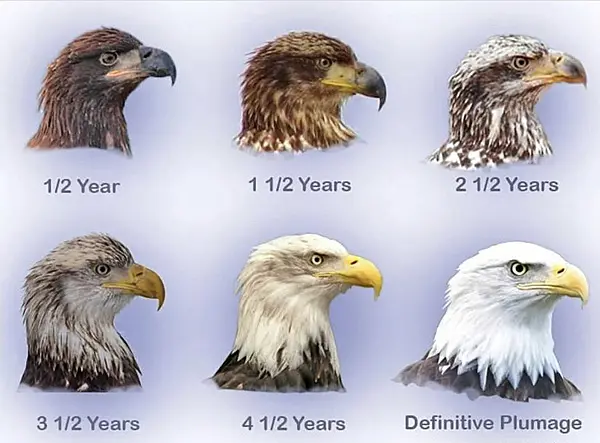
As bald eagles mature, their plumage changes considerably. By around 4 ½ years old, they gradually adopt the adult plumage, transitioning to a white head, neck, and tail while their body remains a dark brown. The transformation is a vivid reminder of the journey from youth to adulthood, demonstrating the resilience and adaptability of nature. It’s like watching a young artist evolve into a master painter, where the groundwork allows the brilliance of the final masterpiece to emerge.
This shift in coloration is not merely aesthetic; it plays a crucial role in mating and social interactions. Adult eagles, with their striking white feathers, are often more attractive to potential mates, signaling not only maturity but also vitality and reproductive fitness. It’s akin to how a lion’s mane signifies strength and dominance in the animal kingdom.
Moreover, the bright yellow beak and feet of the adult bald eagle serve as arresting contrast to its darker body. These bold hues reflect their dietary needs and hunting prowess; a strong yellow beak is essential for tearing through fish and other prey. It’s like donning a royal crown, marking them as apex predators in their realm, and a visual reminder of nature’s artistry.
Summary of Coloration and Plumage
- Juveniles:
- Dark brown, mottled appearance.
- Bright yellow feet and dark bill.
- Adults:
- White head, neck, and tail with dark brown body.
- Bright yellow bill and feet.
- Maturity Timeline:
- Transition to adult plumage between age 4-5.
The dynamic evolution of the bald eagle’s plumage not only emphasizes the symbolism and beauty associated with this magnificent bird but also provides insight into its ecological role within various habitats.
Wingspan and Flight Abilities
Bald eagles are known for their remarkable wingspan and flight capabilities, essential traits that allow them to thrive in diverse habitats. With wingspans averaging between 1.8 to 2.5 meters, these birds can soar majestically above landscapes, gliding effortlessly on air currents. The sheer size of their wings can be compared to a grand sail catching the wind; it empowers them to soar high while expending minimal energy.
When it comes to flight abilities, bald eagles are adept at long-distance soaring and have impressive maneuverability. They are built for power strong, long wings provide them maximum lift, an essential element in their hunting strategies. Such abilities enable them to effortlessly rise above tree lines and cliffs, scanning vast expanses of water for prey. Their gliding prowess could be likened to a skilled dancer moving in perfect rhythm with the music, fluid and confident.
Additionally, bald eagles exhibit various flight maneuvers. During hunting, they often dive at high speeds to snatch their prey, showcasing not only strength but also precision. The act of plunge diving, where they launch from significant heights, is a spectacle of nature akin to a well-aimed javelin cutting through the air. They are capable of reaching speeds up to 160 km/h (100 mph) when diving, demonstrating their athleticism and hunting efficiency.
Another interesting aspect of their flight behavior is their use of wing positioning. When flying at lower altitudes, they often hold their wings parallel to their body, emphasizing a streamlined form that reduces drag and maximizes speed. This aerodynamic design allows them to respond quickly to opportunities, whether it’s catching an unsuspecting fish or evading a rival.
Summary of Wingspan and Flight Abilities
- Wingspan:
- Average: 1.8 to 2.5 meters.
- Flight Capabilities:
- Long-distance soaring.
- Capable of reaching speeds of up to 160 km/h (100 mph).
- Hunting Techniques:
- Plunge diving from heights.
- Skillful maneuvers during hunting.
These remarkable attributes highlight the bald eagle’s role as both a formidable predator and a symbol of agility and strength within the avian world.
Bald Eagle Habitat
Bald eagles (Haliaeetus leucocephalus) thrive in habitats closely tied to large bodies of water, where fish and other prey are abundant. Their ideal environments consist of various aquatic features, such as rivers, lakes, dams, coastal estuaries, and tidal marshes, which provide both food sources and nesting sites. The presence of tall trees nearby is crucial, as they offer vantage points for hunting and safe locations to build nests.
Summary of Key Habitat Components
- Abundance and Diversity of Prey: Critical for sustenance, including fish, birds, and small mammals.
- Aquatic Features: Shallow waters are preferred for easy catch of fish.
- Minimal Human Disturbance: Less developed areas are favored for nesting and breeding.
- Tree Selection: Tall, mature trees for perching and nests, typically near water bodies.
These critical habitat components are essential for ensuring that bald eagles are supported in their natural environment, allowing them to thrive both in breeding and foraging.
Preferred Ecosystems
Bald eagles prefer ecosystems that provide abundant food and suitable nesting locations. Their ecological preferences can be compared to a gourmet feast; they require a rich, diverse menu to thrive.
- Ecosystem Types:
- Freshwater Lakes and Rivers: Rich with fish, these bodies of water are ideal for hunting and are often surrounded by sufficient tree cover for nesting.
- Coastal Areas: Featuring estuaries and tidal marshes where marine life is abundant.
- Wetlands: Provide a variety of food sources and patches of trees for nesting.
- Important Habitat Features:
- Proximity to Water: They are drawn to areas within 1-3 kilometers of reliable water sources.
- Tree Density: Thick tree stands are necessary, providing escape from predators and safe spaces for young eagles.
Their habitat preferences highlight the interconnectedness of ecosystems, showcasing how bald eagles serve as key indicators of environmental health. Like a compass pointing to fertile ground, these raptors rely on ecosystems rich in resources to sustain their populations.
Geographic Distribution
With a broad geographic distribution across North America, the bald eagle can be found in nearly every state, especially in areas where substantial water bodies are present. From the icy shores of Alaska to the warm coastal regions of Florida, bald eagles demonstrate remarkable adaptability.
- Native Range:
- Predominantly found throughout Canada and the United States.
- Commonly sighted near lakes, rivers, and coastal regions.
- Specialized Regions:
- Chesapeake Bay: Recognized for a significant concentration of breeding eagles due to its abundant food sources.
- Mississippi River: Offers excellent foraging opportunities, making it a vital habitat tenure.
Historically, their population has fluctuated due to habitat availability; however, the ongoing conservation efforts have expanded their range, allowing for successful nesting in more urbanized settings. Their adaptability speaks volumes, like nature reclaiming its territory, reflecting resilience and the hope for a brighter future.
Summary of Geographic Distribution
- Widespread Presence: Across nearly all of North America.
- Key Habitats:
- Alaska and the Pacific Northwest (for abundant fish).
- Coastal regions and large lakes throughout the U.S.
As bald eagles reflect their adaptation to various landscapes, their geographic distribution holds valuable insight into the ecological health of North America.
Nesting Sites and Structures
Bald eagles are recognized for their impressive nesting structures, known as eyries. These nests stand as a testament to avian engineering, rivaling the architectural feats of human civilization. Generally constructed high up in sturdy trees or cliff sides, these nests are critical for the survival of this species.
- Nest Characteristics:
- Size: The nests can reach 1.5 meters (5 feet) wide and weigh up to 1 ton, depending on the materials used over the seasons.
- Materials: Primarily built from sticks, they are often lined with softer material such as grass, moss, and feathers to provide cushioning for eggs and chicks.
- Nesting Behavior:
- Reinforcement: Eagles often return to the same nest year after year, adding layers and reinforcing the structure’s integrity.
- Location Preferences: They select tall, mature trees that are at least 2 kilometers away from human activity, emphasizing their need for undisturbed nesting sites.
- Breeding Sites:
- Typically found in national parks and wildlife refuges where human interference is minimized.
- They prefer sites with ample food supply and a clear view of surrounding areas to guard against intruders.
The impressive size and strategic placement of their nests not only provide safety and shelter but also symbolize the commitment these birds have to their offspring, mirroring the dedication found in family units across species.
Summary of Nesting Sites and Structures
- Nest Dimensions: Up to 5 feet wide and can weigh up to 1 ton.
- Materials Used: Sticks, moss, and grass, forming a sturdy structure.
- Location: High in tall trees, often in remote areas to minimize disturbances.
The nesting behavior of bald eagles perfectly illustrates their strong ties to habitat and the importance of conservation in protecting their breeding grounds.
Bald Eagle Diet
Bald eagles primarily follow a carnivorous diet, with fish as their chief food source. Fish constitutes around 70% to 90% of their intake, often preferred for its availability and high-fat content, which is crucial for energy.
Summary of Diet
- Primary Food Source: Fish (e.g., salmon, trout, catfish).
- Opportunistic Feeding: They adapt their diet based on seasonal availability, consuming various food items as needed.
Their adaptability in feeding habits allows them to thrive in varying environments, ensuring their survival even when fish are less accessible.
Primary Food Sources
- Fish: The bald eagle’s favorite food around 70-90% of their diet includes:
- Salmon: Rich in omega-3 fatty acids.
- Trout: Available in freshwater sources.
- Herring: A key food source in coastal regions.
- Additional Sources:
- Birds: Waterfowl and gulls occasionally supplement their diet, making up over 25% when fish is scarce.
- Mammals: Rabbits and young deer, but to a lesser extent, as they prefer more accessible prey.
- Carrion: Roadkill or leftover food from other predators.
This dietary flexibility illustrates not just the bald eagle’s role as a top predator but also its place in the intricate web of ecosystems, impacting population dynamics of prey species.
Hunting Techniques
Bald eagles showcase various hunting techniques that allow them to efficiently procure food. Their hunting prowess can be likened to skilled craftsmen, employing different tools for diverse outcomes.
- Plunge Diving:
- One of their most effective techniques is to soar high and dive at incredible speeds to catch fish. This method showcases their keen eyesight, allowing them to spot prey from high altitudes.
- Perched Hunting:
- Often seen perched on branches or rocks, bald eagles use this vantage point to scout for movement in the water below. When they spot a fish, they can swoop down for the catch.
- Surface Skimming:
- Flying low over the water, they use their sharp talons to snatch up fish quite close to the surface.
- Stealing from Other Birds:
- Eagles are known to steal from ospreys or other birds who have just caught fish, showcasing opportunistic feeding behavior.
These versatile hunting strategies emphasize their adaptability and efficiency as a species. Much like an intuitive chef adjusting recipes on the fly, bald eagles change hunting tactics based on current circumstances and prey availability.
Summary of Hunting Techniques
- Plunge Diving: High-altitude dives to catch fish.
- Perched Hunting: Scouting from high vantage points.
- Surface Skimming: Low flying to catch prey near the surface.
- Stealing: Opportunistic feeding from other birds.
This assortment of hunting methods confirms the bald eagle’s place as an apex predator, illustrating how their physical and behavioral adaptations intersect with ecological dynamics.
Foraging Behavior
Bald eagles exhibit highly efficient foraging behaviors, showcasing their adaptability and opportunistic nature. These behaviors can be understood through several intriguing aspects:
- Opportunistic Feeding: Bald eagles will consume whatever is readily available based on seasonal changes. In periods when fish are in abundance, they will primarily seek them out. However, when fish are scarce, they may shift to hunting small mammals such as rabbits or feed on carrion.
- Seasonal Variations: Their foraging behavior varies throughout the year. For instance, during the fall migration, they may follow waterfowl or stay near areas with extensive fish populations, utilizing temporal food availability effectively.
- Competition and Dominance: Social dynamics play an important role in foraging success among bald eagles. Dominant individuals may control access to prime foraging areas, and subordinates may have to adapt their foraging strategy based on what is available.
- Scavenging Behavior: When other food sources become limited, bald eagles will scavenge from carcasses or leftovers left by larger predators, reducing the energy required for active hunting.
These behaviors highlight the eagle’s flexibility and intelligent response to their environment, ensuring food security amid changing conditions. Much like a resourceful household adjusting to seasonal food availability, bald eagles exhibit behaviors that enable them to thrive and survive.
Summary of Foraging Behavior
- Seasonal Adaptation: Changes in diet based on season and prey availability.
- Social Dynamics: Competition affects foraging success.
- Scavenging Ability: Opportunistic use of available resources.
Thus, the foraging behaviors of bald eagles demonstrate their remarkable adaptability and resourcefulness, ensuring their survival in varying habitats.
Bald Eagle Behavior
Bald eagles exhibit a fascinating array of behaviors that reflect their ecological roles and social dynamics. Understanding these behaviors helps provide deeper insights into their interactions both with their environment and with each other.
Summary of Behavioral Traits
- Territoriality: They fiercely defend nesting areas.
- Social Interactions: Engage in bonding rituals during mating season.
Mating Rituals
The mating rituals of bald eagles are intricate and play a significant role in forming and maintaining their lifelong partnerships. These behaviors illustrate not only the bond between mates but also their investment in raising future generations.
- Monogamous Partnerships: Bald eagles are known for forming strong, lifelong bonds with a single mate. They demonstrate significant emotional connections during courtship and beyond. If one partner dies, the survivor will often seek another mate.
- Courtship Displays: These spectacular displays involve aerial maneuvers, known as “sky dancing,” where eagles perform impressive flips and dives, showcasing their strength and agility. Additionally, mutual preening and feeding behaviors occur during courtship, reinforcing their bond and commitment.
- Nest Building: After successfully courting, the pair collaborates on nest-building, using materials such as sticks and grasses. This cooperative effort demonstrates their teamwork and commitment to creating a safe environment for their future offspring.
- Copulation: The act of mating occurs typically before the female lays her eggs but can happen at other times as well. Both partners play an active role in nurturing their young, sharing responsibilities in incubating the eggs and caring for fledglings after hatching.
These rituals symbolize the deep connections that bald eagles share, akin to the sacred bond observed in human relationships, fostering a nurturing environment for the next generation.
Summary of Mating Rituals
- Monogamous Partnerships: Lifelong bonds are formed.
- Courtship Displays: Sky dancing and mutual preening.
- Nest Building: Collaborative construction of nesting sites.
- Shared Duties: Equal responsibilities in raising nestlings.
The intricacy of these behaviors underlines the importance of social bonds in the survival and success of bald eagles.
Territorial Defense
Bald eagles demonstrate a vigorous commitment to defending their nesting territories, particularly during the breeding season. Their territorial behavior is critical for securing breeding sites that provide them access to ample food sources.
- Territoriality: Establishment of chosen breeding areas based on proximity to food sources lies at the core of their survival strategy. Territorial defense often involves a combination of vocalizations and physical displays.
- Vocal Communications: Eagles engage in distinct vocalizations to communicate and establish dominance over their territory. Aggressive calls serve as warnings to potential intruders while reinforcing their territorial claim.
- Aerial Skirmishes: During confrontations, eagles may partake in dramatic aerial displays, engaging in talon grappling and high-speed chases to drive away rivals. These acts not only delineate territory but also showcase their physical prowess.
- Response to Threats: Beyond intra-species interactions, bald eagles vigilantly guard against predation from larger birds of prey, utilizing their fierce demeanor to protect their nest and young.
These territorial behaviors and communications are similar to the defenses exhibited by human societies; both species demonstrate a desire to protect familial bonds and resources.
Summary of Territorial Defense
- Vigorous Defense: Defense of nests during breeding seasons.
- Vocal Signals: Communication through aggressive calls.
- Aerial Displays: Dramatic encounters to drive off rivals.
The fervor with which bald eagles defend their territory reflects the significance of securing vital resources for raising young.
Social Interactions
Bald eagles display a range of social interactions that transcend mere mating behavior. Their social dynamics are characterized by a complex blend of cooperation and competition, significantly influencing their survival strategies.
- Interactions Among Mates: Beyond courtship, eagles engage in bonding behaviors, including mutual preening and shared feeding efforts. These actions strengthen their social bonds, crucial for cooperative parenting.
- Juvenile-To-Adult Dynamics: Young eagles often remain dependent on their parents for nutrition and protection, fostering interactions that help instill hunting techniques and survival skills.
- Learning from Competition: In areas where food is limited, competition among eagles can arise. More dominant individuals often secure better access to prime spotting and feeding areas, which can be a decisive factor in survival.
- Seasonal Congregation: While typically solitary, bald eagles may gather in larger numbers during winter months when food is plentiful. This social behavior supports shared scavenging and hunting efforts.
These social behaviors echo human interactions fostering community and collaboration while dealing with competition and resource allocation.
Summary of Social Interactions
- Bonding Behaviors: Mutual feeding and preening to strengthen ties.
- Juvenile Socialization: Learning survival skills from adult eagles.
- Competitive Dynamics: Dominance influences access to resources.
The social interactions and dynamics among bald eagles illustrate the complex web of relationships that contribute to their ecological success.
Bald Eagle Conservation Status
The conservation status of the bald eagle reflects a notable journey from potential extinction to recovery, leading to its designation as a symbol of successful wildlife conservation efforts. Key factors have shaped this trajectory and offer valuable lessons for future initiatives.
Summary of Conservation Status
- Historical Decline: Population plummeted due to habitat loss, hunting, and pollution.
- Legislative Protection: The Bald Eagle Protection Act established legal safeguards.
- Population Recovery: Successful conservation efforts have led to impressive population rebounds.
Historical Decline
The decline of the bald eagle population began notably in the late 19th century, driven by various human-induced factors. Estimates suggest that when the first Europeans arrived, there were potentially 250,000 to 500,000 bald eagles in North America. However, as development advanced, habitat destruction, combined with hunting and poisoning, significantly affected population numbers.
- Impact of DDT: The introduction of the pesticide DDT in the 1940s led to drastic reproductive failures in bald eagles. The pesticide caused eggshell thinning, resulting in lower reproductive success. By 1963, the population had dwindled to an all-time low of merely 417 nesting pairs in the lower 48 states.
- Legal Protections: In response to the dire situation, bald eagles were one of the first species to receive federal protection under the Endangered Species Preservation Act of 1966 and later under the Endangered Species Act of 1973. This marked a turning point in the efforts to save these magnificent birds.
- Awareness and Action: Public awareness regarding bald eagle conservation efforts increased, leading to collaborative efforts from governmental agencies and non-profit organizations focused on habitat restoration and protection.
This narrative of decline underscores the urgent need for continuous active conservation practices and legislative action, teaching humanity a vital lesson about the consequences of neglecting species in the pursuit of progress.
Summary of Historical Decline
- Population Collapse: From estimated 250,000-500,000 to just 417 nesting pairs.
- Key Threats: Habitat loss, hunting, and pesticide effects.
The historical decline underscores the critical importance of advocacy and cooperative efforts to conserve vulnerable species.
Recovery Efforts
The recovery of the bald eagle represents one of the most significant conservation success stories in North America. Following decades of focused initiatives, the population has rebounded dramatically.
- Legal Protections: Implementation of the Bald Eagle Protection Act has prohibited the killing and disturbance of eagles, safeguarding these birds from direct threats.
- Habitat Restoration: Various conservation groups engage in habitat restoration efforts, ensuring eagles have suitable nesting and foraging sites. Habitat protection laws have also been strengthened.
- Artificial Nesting Programs: Techniques such as “hacking” (rearing young eagles in artificial nests) have been used successfully to boost local populations. This method shows great promise, as birdlings can adapt to their environments efficiently.
- Monitoring and Research: Continuous population monitoring and research help refine conservation strategies. By studying nesting success, researchers better understand effective practices to support eagle populations.
As of 2020, estimates indicate approximately 316,700 bald eagles, including 71,400 nesting pairs, showcasing the success of these efforts. The journey from near extinction to invigorated populations serves as a powerful testament to teamwork and advocacy.
Current conservation efforts remain critical to ensuring that the bald eagle’s resurgence does not produce complacency. Legal protections remain in place, highlighting the collaborative spirit of stakeholders dedicated to their continued survival.
Summary of Recovery Efforts
- Legal Protections: The Bald Eagle Protection Act prohibits harming eagles.
- Successful Nesting Programs: Strategies like “hacking” have helped revive local populations.
This narrative of recovery illustrates how collective determination can lead to incredible change in conservation efforts.
Current Population Status
As of recent estimates in 2020, the current population of the bald eagle in the contiguous United States is around 316,700 individuals, which includes approximately 71,400 nesting pairs. This resurgence signifies a remarkable recovery from the brink of extinction and highlights the effectiveness of conservation efforts.
- Population Growth: Since the banning of DDT and the implementation of protective measures, the bald eagle population has quadrupled since 2009. The continued upward trend is encouraging, signaling success in habitat management and legislative actions.
- Diverse Habitats: Their adaptability allows them to thrive across various environments, from remote wilderness areas to increasingly urbanized landscapes.
- Conservation Outreach: The increased public awareness surrounding bald eagle conservation contributes significantly to ongoing efforts, fostering a sense of stewardship among communities.
- Global Significance: The healthy population of the bald eagle serves as an indicator of ecosystem health and signifies the broader success of wildlife conservation initiatives.
Despite these promising numbers, ongoing threats such as habitat destruction, climate change, and lead poisoning remain critical issues that require continued attention.
Summary of Current Population Status
- Estimated 2020 Population: 316,700 individuals, including 71,400 nesting pairs.
- Continuing Conservation Efforts: Preservation and advocacy necessary to ensure population stability.
The current status of bald eagles serves not only as a reminder of our responsibility to nature but also as an inspiration reflecting the possibility of recovery and resilience in the face of adversity.
Bald Eagle Threats to Survival
Despite the remarkable recovery, bald eagles continue to face several threats that jeopardize their populations and habitats. These threats highlight the delicate balance of ecosystems and the continued need for proactive conservation efforts.
Summary of Threats
- Habitat Destruction: Urban development and agriculture lead to loss of nesting sites.
- Pesticides and Chemicals: Legacy effects from past pesticide use affect breeding success.
- Climate Change: Alters habitats and food availability for bald eagles.
Habitat Destruction
Habitat destruction poses a critical threat to the survival of bald eagles. Increased human activity, urban development, agriculture, and deforestation result in the loss of essential nesting and foraging habitats.
- Human Encroachment: As urban areas expand, suitable nesting and hunting locations diminish. Bald eagles require undisturbed environments, and increased human presence can disrupt their natural behaviors.
- Effects on Shorelines: The destruction of shorelines limits access to aquatic prey, reducing food availability. Healthy shorelines are vital for fish populations, which directly impacts the eagles’ ability to hunt.
- Legal Protections: Although some protections exist, the pressure from human activities continues to increase. Balancing development and conservation is an ongoing challenge that necessitates innovative solutions.
The loss of habitat places added stress on populations already recovering, underscoring the importance of comprehensive conservation plans that prioritize the safeguarding of nesting and foraging areas.
Summary of Habitat Destruction
- Urban Development: Leads to loss of vital habitats.
- Human Activity: Restricts access to resources and nesting sites.
The threat of habitat destruction illuminates the pressing need for responsible conservation and development practices.
Pesticides and Chemicals
Pesticides and chemicals pose significant risks to bald eagle populations, with historical and current impacts that threaten reproductive success and overall health.
- Legacy of DDT: Although DDT was banned in the 1970s, its effects linger in the environment. Residual chemicals can remain in aquatic systems and bioaccumulate in the food chain, impacting eagle populations that rely on fish for sustenance.
- Lead Poisoning: An immediate concern, lead poisoning from ingesting lead fragments in carrion remains widespread among bald eagle populations. Studies indicate upwards of 47% of eagles exhibit signs of chronic lead exposure, hindering recovery efforts.
- Monitoring and Legislation: Continuous monitoring is crucial to understanding the extent of chemical impacts. Sustained advocacy for reducing pesticide use and phasing out harmful substances is essential for long-term health.
The long-term implications of chemical threats necessitate collaborative efforts to mitigate risks and ensure the safety of the environment that bald eagles inhabit.
Summary of Pesticides and Chemicals
- DDT Residuals: Long-term effects continue to threaten reproductive success.
- Lead Exposure: A significant cause of morbidity and mortality.
Recognizing the threats posed by chemicals underscores the importance of addressing these issues through education, regulation, and community action.
Climate Change Impact
Bald eagles face challenges from climate change that threaten their habitats and food availability, prompting concern for their future resilience.
- Temperature Rise: Increasing temperatures in certain regions can affect reproductive success. Eagles in southern areas may experience unfavorable conditions for nesting, limiting their breeding output.
- Shifting Habitats: Habitat alterations due to climate change can modify prey distributions and nesting areas, leading to increased competition and stress on resources.
- Long-term Predictions: Reports estimate that by 2060, three-quarters of the current range for bald eagles may become unsuitable for nesting due to climate shifts. The potential migration to cooler habitats poses additional challenges regarding adaptability and resource access.
The impact of climate change introduces complexities to conservation strategies, testing our ability to effectively respond to and mitigate emerging threats.
Summary of Climate Change Impact
- Rising Temperatures: Affecting reproductive capabilities.
- Shifting Ecosystems: Alters habitat suitability and affects prey distributions.
Awareness of climate change challenges underscores our responsibility to pursue sustainable practices for the earth and its ecosystems.
Bald Eagle Cultural Significance
The cultural significance of bald eagles transcends their biological presence, as they hold a revered status in American society and among Indigenous cultures. They embody qualities of freedom, strength, and resilience.
Summary of Cultural Significance
- National Symbol of the United States: Represents ideals of freedom and independence.
- Representation in Media and Literature: A powerful symbol in art, literature, and political discourse.
- Spiritual Meaning to Indigenous Peoples: Holds sacred attributes and is integral to cultural ceremonies.
National Symbol of the United States
The bald eagle’s status as the national symbol of the United States was cemented on June 20, 1782. Chosen for its striking appearance and majestic flight, the eagle embodies qualities that resonate with the nation’s values.
- Great Seal of the United States: Featured on the official seal, the bald eagle holds an olive branch and arrows, symbolizing peace and readiness. This image reflects the principles of unity and authority, representing the country.
- Representation of Freedom: The eagle’s soaring flight serves as an emblem of courage and independence, standing against tyranny and oppression.
- Cultural Representation: It appears in numerous government artifacts, coins, and military insignia, further embedding its image within the national identity.
The eagle’s patriotic symbolism is a reminder of ideals central to American heritage and unity.
Summary of National Symbol
- Established in 1782: Chosen for its qualities representing national identity.
- Great Seal: Emblematic of peace and authority.
Bald eagles reflect the spirit of America and its quest for freedom and strength.
Representation in Media and Literature
Bald eagles continue to be a prevalent symbol in American media and literature, embodying themes of strength and resilience. Their majestic presence has inspired various works, boasting rich metaphorical meanings.
- Monumental Imagery: Commonly depicted in films, documentaries, and political art, the bald eagle symbolizes the wilderness and the natural world, advocating for conservation efforts.
- Literary Symbolism: The eagle often appears in literature, representing courage and the human spirit’s unyielding nature. Authors frequently employ the eagle as a metaphor for hope and aspiration, instilling readers with a sense of determination.
- Cultural Commentaries: The presence of the bald eagle in pop culture underscores its significance in fostering a connection to nature while reminding society of the importance of conservation.
Through its repeated symbolism in media, the bald eagle serves as a reminder of the values that unite society in the pursuit of environmental preservation.
Summary of Representation in Media and Literature
- Prominent in Political Discourse: Symbol representing freedom and independence.
- Literary Motifs: Used to embody themes of courage and resilience.
Bald eagles’ representation in various mediums reinforces themes of liberty and the importance of protecting the natural environment.
Spiritual Meaning to Indigenous Peoples
Among Native American tribes, bald eagles hold profound spiritual significance. Considered sacred messengers, eagles embody qualities valued in many Indigenous cultures.
- Messenger to the Creator: Bald eagles serve as intermediaries between the human and spiritual realms. Many tribes believe that eagle feathers carry prayers to the spirit world.
- Cultural Ceremonies: Feathers play vital roles in traditional rituals that signify honor, bravery, and spiritual connection. Eagle feathers are often worn by tribal leaders during ceremonies, affirming their authority and connection to the sacred.
- Attributes and Values: Indigenous peoples ascribe qualities such as wisdom, courage, and strength to bald eagles. Encounters with these majestic birds are often interpreted as auspicious signs, encouraging individuals to embody these attributes.
The spiritual meaning of bald eagles within Indigenous cultures emphasizes not only the need for respectful coexistence with nature but also the cultural narratives that shape their identity.
Summary of Spiritual Meaning to Indigenous Peoples
- Messengers to the Spirit World: Carrying prayers and significance.
- Ceremonial Importance: Feathers symbolize honor and spirituality.
Bald eagles are revered as powerful spiritual entities, demonstrating profound cultural connections between humans and wildlife.
Conclusion
The bald eagle’s journey from the threat of extinction to becoming a national symbol of conservation success underscores the resilience of nature and the importance of collaborative stewardship. Its striking physical characteristics, versatile adaptability, and profound cultural significance highlight its role not just as a majestic bird of prey but also as a cornerstone of ecological health and human connection. By fostering a deeper appreciation for this iconic species, society can recognize the importance of continued conservation efforts and sustainable practices to ensure that future generations experience the majesty of the bald eagle and the wealth of biodiversity it represents.


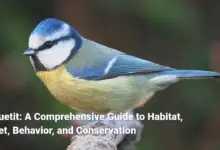

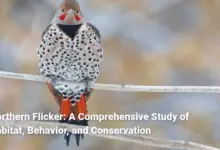


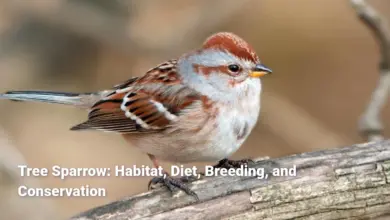

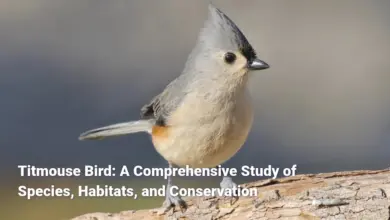
One Comment